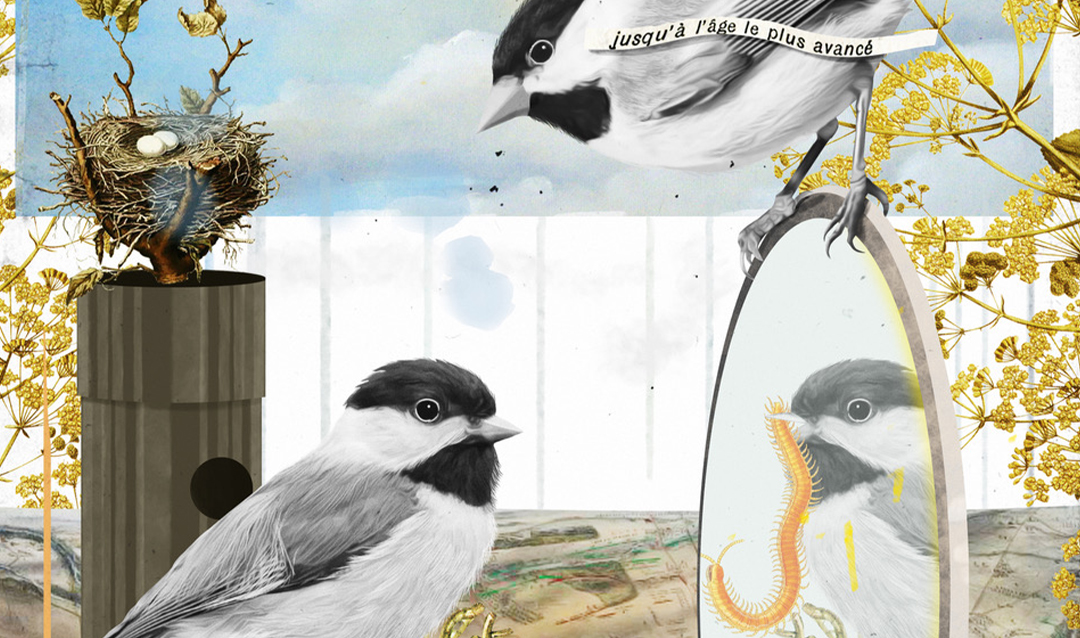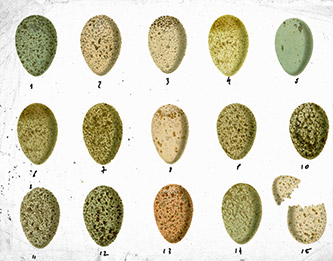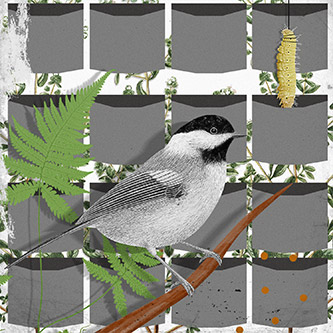Birds of a Feather
Rice conducted postdoctoral work at Uppsala University in Sweden, where she began examining hybridization in birds after focusing her doctoral work on toads. A faculty position at Lehigh University then offered a valuable opportunity to work in a hybrid zone that includes, among several forested state and county parks, Lehigh’s mountainous campus.
During chickadee nesting season, Rice and her team set up nesting tubes made of camouflaged PVC pipe throughout their field sites. Drawn to the tubes, which mimic the dead or partially dead trees that chickadees favor, the birds build their nests and lay eggs. The team can then observe the nests and monitor breeding success. Approximately 10 days after the eggs have hatched, the team sets up fine mesh nets to capture the birds, tag them, measure them, take blood samples and release them. They conduct DNA tests on the blood samples to determine the species of each bird.
“Because they look so similar, we had to develop a way to figure out [which species] they were,” Rice explains. The team’s genotyping approach, which involves 10 restriction enzyme digestion sites, determines whether a bird is a pure Carolina chickadee, a pure black-capped chickadee or some version of a hybrid.
“There’s a big mix in what we have here at Lehigh,” says Rice.
The fitness of the hybrids determines the many possible outcomes of hybridization. In some cases, a hybrid’s fitness can influence the occurrence of reverse speciation, in which two species eventually fuse into one. In other cases, hybridization can enhance the barriers between the two species—researchers have observed selection against individuals that are hybridizing if the hybrids have particularly low fitness.
“That can actually cause mechanisms in those pure species to evolve, [making] them better at not making that decision to hybridize,” says Rice. “We call that reinforcement.”
In between those two extremes is hybrid speciation, through which a new species forms. This is more common among plants but does happen occasionally in animals, Rice says. All these possibilities lend themselves to many questions.
“If we think that those barriers between the species aren’t breaking down, what’s the reason? Are the hybrids having low fitness? If so, why? What are those consequences? And then we’re also interested in consequences after hybridization, so how selection acts on the hybrids and … what’s keeping them from hybridizing as much as they might otherwise,” Rice explains.
Smell, for example, might be a factor. In a recent study—the first to document naturally hybridizing songbirds’ preference for the scent of their own species—Rice and doctoral student Alex Van Huynh found that odor might play a role in mate selection among naturally hybridizing songbirds.
Using gas-chromatography mass-spectrometry to analyze differences between the species in the natural oils the birds produce from their uropygial glands, the team discovered that black-capped and Carolina chickadees produce chemically distinct natural oils. They then tested for odor preference using a Y-maze, measuring the amount of time each chickadee spent with a particular smell. They found that the male and female chickadees prefer the scent of their own species over the smell of the other species. This preference, says Rice, could reduce the likelihood of hybridization.
The team’s results were published in an article titled “Conspecific olfactory preferences and interspecific divergence in odor cues in a chickadee hybrid zone” in the journal Ecology and Evolution.







